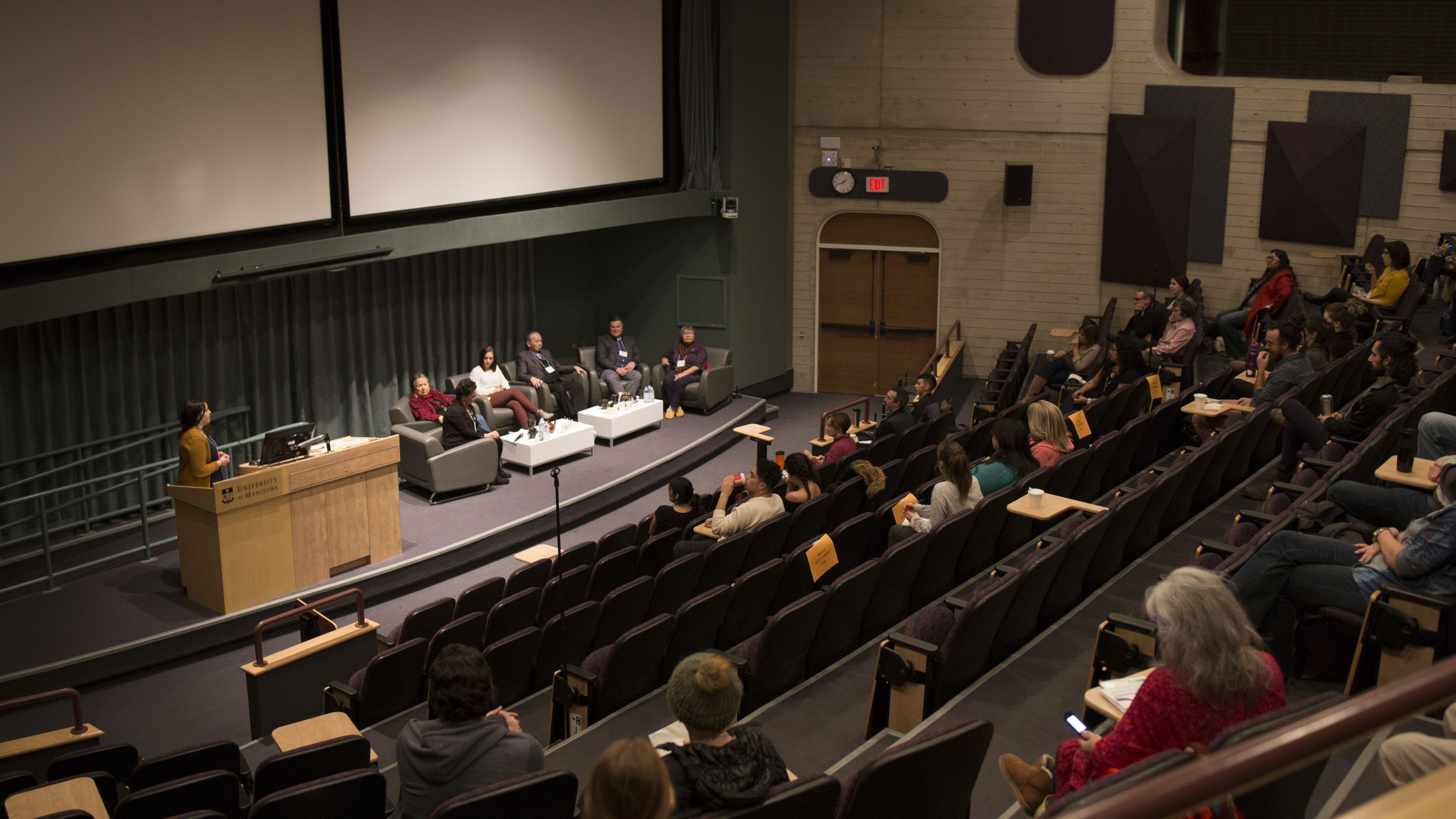The University of Manitoba celebrated the completion of several infrastructure projects through a special campus-wide open house on Nov. 9.
The projects were made possible through the federal government’s Knowledge Infrastructure Program (KIP), which provided $2 billion in funding to universities across the country for a variety of infrastructure projects.
The program was premised on stimulating the Canadian economy following the recession of 2008 and provided up to 50 per cent of the funding for projects at post-secondary institutions across the country.
The U of M was the recipient of funding for seven KIP-funded projects with a price tag of approximately $100 million dollars over two years — one of the most of any university in Canada, university president David Barnard remarked at a presentation during the open house.
“It’s building [ . . . ] capacity for education, for research, for engagement in the community, and we’re really proud of what’s being accomplished,” Barnard said.
In terms of improving student experience, Barnard noted that many of the projects that KIP helped fund “are directly in spaces that students are using.” He pointed to the renovations to Biological Sciences and the Buller Building science laboratories, as well as upgrades to the Neil John Maclean library on the Bannatyne campus.
Looking to the future of infrastructure development at the U of M, particularly the Southwood golf course property, Barnard said that the university community will likely begin to see some early projects in the next few years.
“Southwood will be a development project that will extend over a long period of time, decades for sure, [ . . . ] so it’s in the very early stages,” he said.
Barnard explained that a planning group has begun discussing possible uses for the property.
“Some of the ideas that will be important there will be residences for students. We want to see more people living near the campus,” he said.
“It’s an idea [ . . . ]. There’s a planning group working on that now.”
Paul Davidson, president of the Association of Universities and Colleges of Canada (AUCC), said that KIP projects have helped transform and improve the physical appearance of universities across the country.
“It’s really important that we have leading facilities, world class facilities, to attract faculty and to attract students,” he said.
“It says to people that Canada is a place that cares about post-secondary education, a place that’s investing in post-secondary education, and you can have a very successful career here.”
Several university officials and local politicians were in attendance to mark the opening of the U of M’s seven projects, including provincial Minister of Advanced Education Erin Selby, Vic Toews, federal minister of public safety, and Rod Bruinooge, member of Parliament for Winnipeg South, the riding that encompasses the U of M.
Bruinooge, who is chair of the federal government’s post-secondary education caucus, said that he was happy to play a role in the U of M receiving KIP funding.
He commented that, like universities across the country, the U of M has seen many of its buildings deteriorate.
“One of the best parts of the program was that [the U of M] was able to invest in old buildings,” he said, pointing the renovations in the Buller Building laboratories.
“That was a major refurbishment. [ . . . ] Some of those labs were really relics of the ’60s. The deans will tell you that they really weren’t the most pleasant environments for students to work in,” he said.
“When this came around, thankfully the U of M had a strong application and we’ve seen some great refurbishment.”
photo by sarah petz
Where did those dollars go?
ARTlab:
multidisciplinary art and technology centre that will house the school of art and faculty of music facilities.
Cost: $30 million (cost split evenly between province and KIP funding)
Biological Sciences:
project included renovations and upgrades to research and teaching laboratories.
Cost: $13.26 million (cost split evenly between province and KIP funding)
Buller Building Science Laboratory:
similar to Biological Sciences building, Buller saw renovations and upgrades to research and teaching laboratories for the faculty of science’s department of microbiology, as well as the faculty’s department of biological sciences.
Cost: $4.75 million (cost split evenly between province and KIP funding)
Neil John Maclean Library:
located on the Bannatyne campus, the library was expanded to house the Aboriginal health collection, a rare book collection and new student study spaces.
Cost: $2.74 million (cost split evenly between KIP funding and private donations)
Regenerative Medicine:
received funds for new research space within the faculty of medicine on the Bannatyne campus.
Cost:$5 million (cost split evenly between KIP funding and private donations)
Eureka Project:
saw an expansion of the incubating facility “to support more high-tech companies during their early stages of development and to assist them in becoming successful and independent,” reads a U of M press release. Also saw construction of new meeting centre within Smartpark on Fort Garry campus
Cost: $3.2 million (cost split evenly between KIP and Smartpark donations)
Smartpark Lake 2 Infrastructure:
expansion of Smartpark, which will “lead to enhanced university-industry research and technology collaborations,” according to a U of M press release
Cost: $2.5 million




